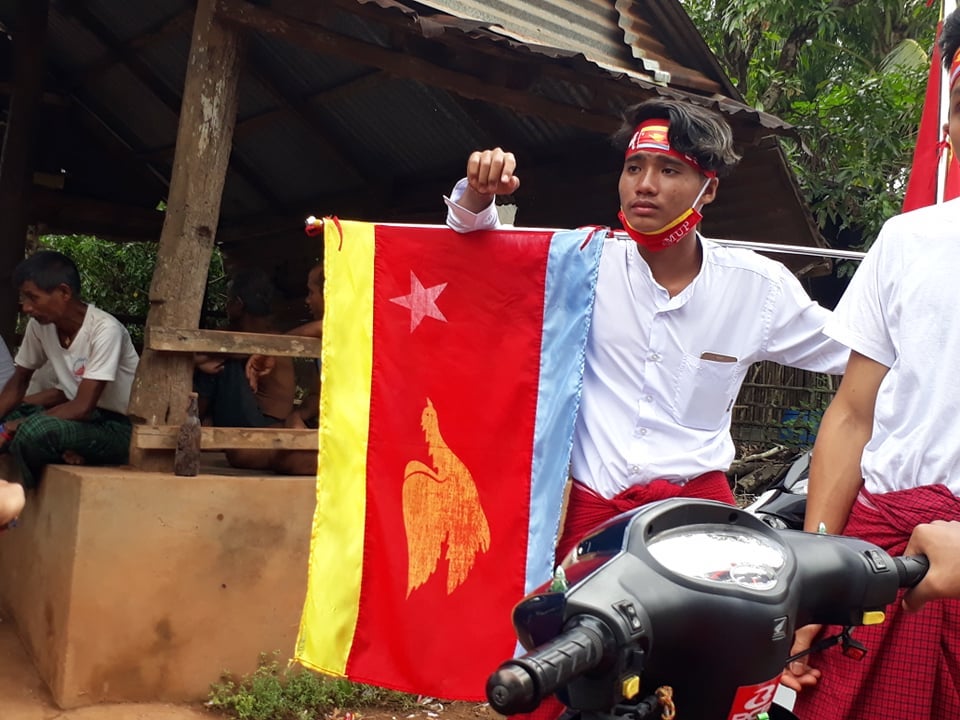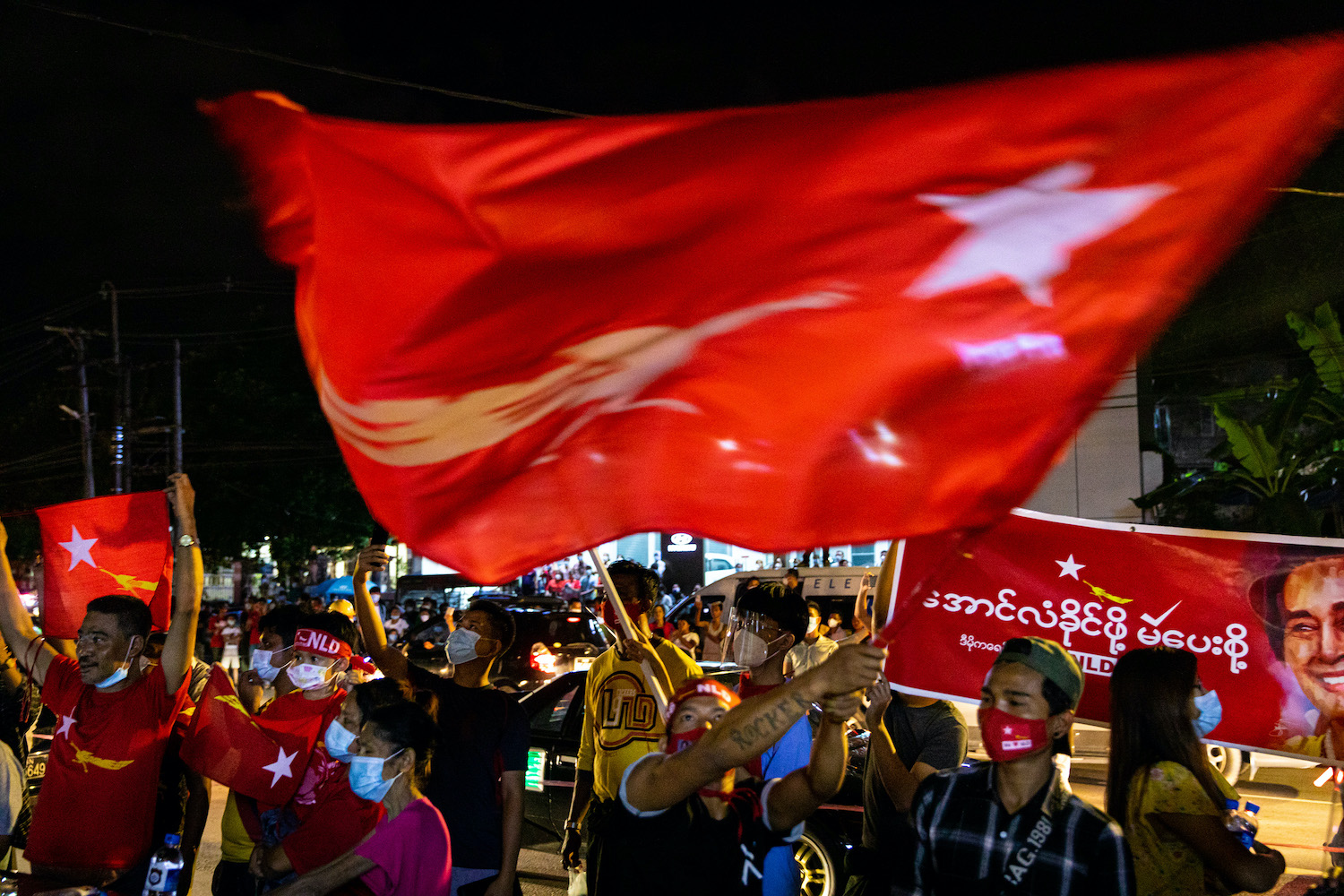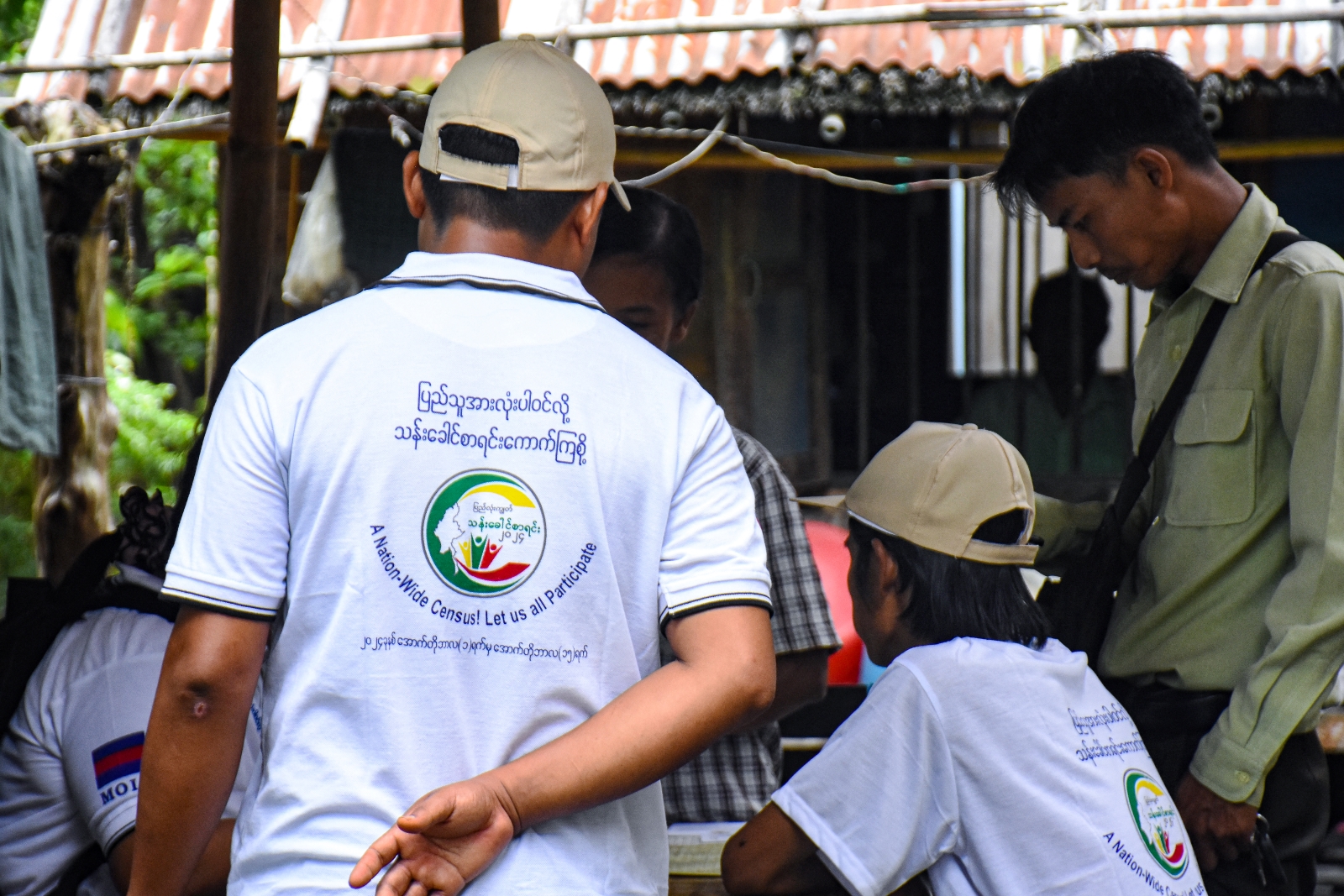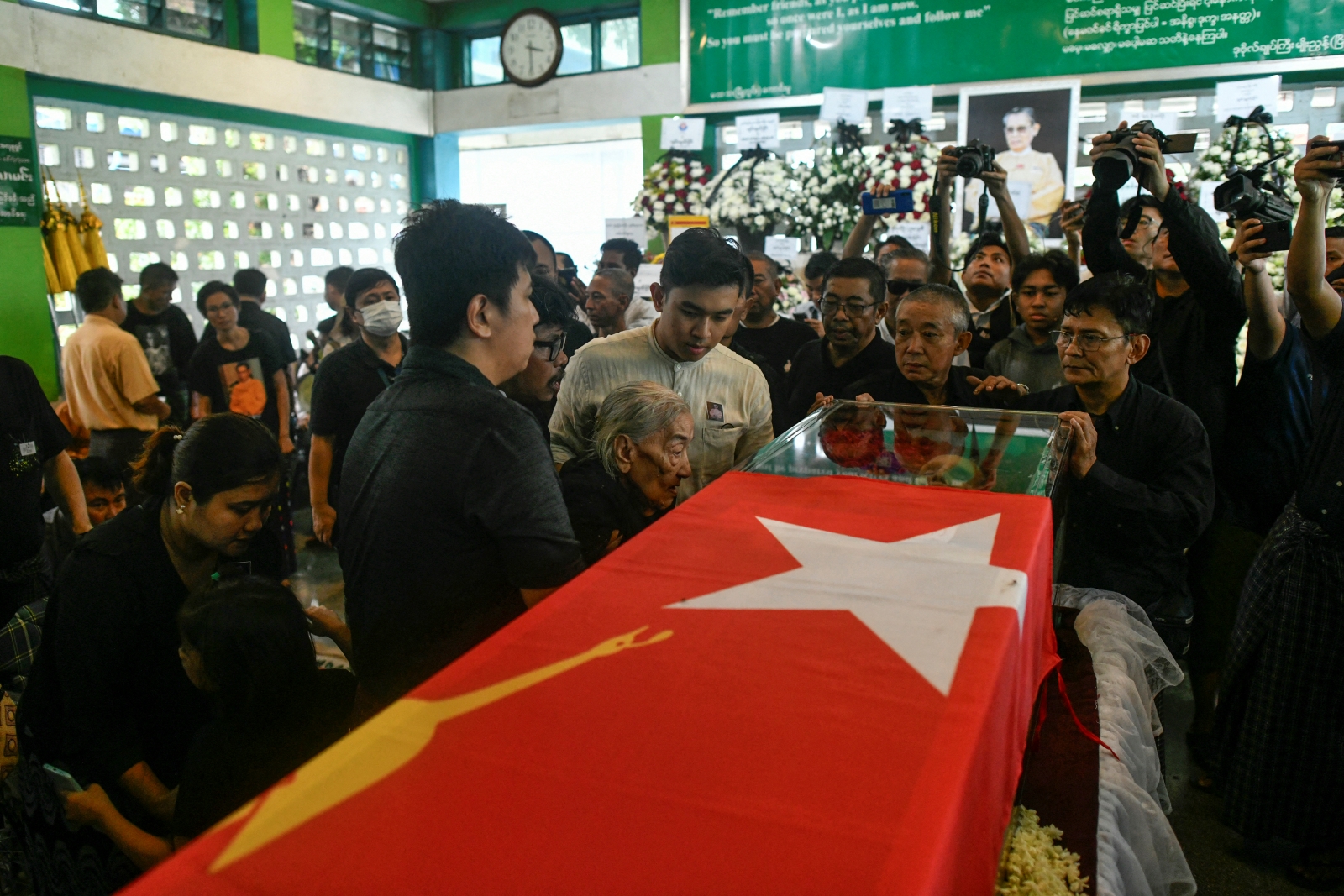The support of a relatively homogenous ethnic group, community-wide mobilisation and clear messaging were among the reasons for the MUP’s impressive election debut.
By MI KUN CHAN NON, MI SAR YAR POINE and ASHLEY SOUTH | FRONTIER
Although results from the November 8 election have yet to be fully confirmed, it is clear the National League for Democracy has clinched another landslide victory, the military-aligned Union Solidarity and Development Party has lost heavily and most ethnic parties have fared poorly, with a few exceptions.
The Mon Unity Party has won 12 seats, including the position of minister for Mon ethnic affairs in the government of neighbouring Kayin State, and is on track to become the fourth biggest party in the nation’s hluttaws. Among ethnic parties, only the Shan Nationalities League for Democracy has done better, with 44 seats. The Kayah State Democratic Party, another party formed by the members of multiple parties to avoid a split vote, also did well, securing eight seats.
The MUP was formed in September 2018, and registered in July 2019, by former members of the All Mon Region Democracy Party and the Mon National Party. In the 2010 election, which was boycotted by the MNP, the AMRDP won 16 seats, and in 2015, competing for the first time against the NLD, the MNP won three seats and the AMRDP, one. (An earlier incarnation of the MNP, the Mon National Democratic Party, won five seats in the 1990 election that the ruling military junta refused to honour.)
The newly elected MP for Ye-2 in the Mon State Hluttaw, Min Aung Htoo (aka Nai Banyar Mon), told the authors of this article that “small parties like the MUP have struggled a lot in this election”. The successful MUP candidate, who took a seat the NLD won by a big margin in the 2015 election, said “the efforts of all the community” were key the party’s successes.
“We have a big responsibility,” he said. “We will do our best in the next five years.”
Barriers to ethnic party success
The poor showing by most ethnic parties in the election are arguably explained by three inter-related factors that limited the franchise of ethnic voters in a way that possibly amounted to voter suppression and called into question the fairness of the polls.
There are about three million Myanmar migrant workers in neighbouring Thailand, and although some have returned home since the COVID-19 pandemic struck, many remain in the kingdom. Although more migrant workers registered to vote at Myanmar diplomatic missions in Thailand compared to 2015, the number of overseas voters was still low. This is highly significant, because the overwhelming majority of migrant workers in Thailand are from areas in southeast Myanmar populated by ethnic nationalities– and affected by conflict – where ethnic political parties hoped to do well.
Secondly, the cancellation of voting in many constituencies will have hurt ethnic political parties in Mon, Kayin, Kachin, Shan and Rakhine states. Is it a coincidence that the two states most likely to have elected hluttaws with ethnic party majorities – Shan and Rakhine – are where the most cancellations occurred due to “security concerns”? It is notable that, despite having most of its core constituencies cancelled, the Arakan National Party has kept its position as the largest party in the Rakhine State Hluttaw.
Thirdly, at least one million Muslims in and from Myanmar were denied the right to vote, including Rohingya in Rakhine and in refugee camps in neighbouring Bangladesh. Some Rohingya election candidates were disqualified despite being citizens because they could not prove that their parents were citizens at the time that they, the candidates, were born. This constitutes the largest act of political exclusion of minority communities in Myanmar.
To these constraints should be added the “incumbent advantage” enjoyed by the NLD, and its distribution of patronage to voters in the form of COVID-19 relief handouts ahead of the vote. These factors help to explain why ethnic parties did not do better in the polls, despite the perhaps unrealistic expectations of their members and supporters. How did the MUP buck this trend?
The MUP’s advantage
The Mon population in central and southern Mon State, southeastern Kayin State, and northern Tanintharyi Region is densely settled, with relatively little overlap with other ethnic communities. (In contrast, northern Mon State is mostly populated by Bamar, Karen and Pa-O communities.)
Although Mon and Karen villagers, for example, often live side-by-side, many Mon are concentrated in an area of Thanbyuzayat and Ye Townships and the coastal resort of Kyaikkami (known as Amherst under British colonial rule). For this reason, Mon parties have previously done well under Myanmar’s first-past-the-post electoral system.
In addition, compared to many “upland” communities, the Mon are relatively homogenous in terms of language use and religion, most being Theravada Buddhists. The Mon, who have 1,500 years of written history, are not as fragmented in language and religion as other ethnic nationality communities that have found political unity difficult to achieve.
The MUP is one of five ethnic political parties, including the Kayah State Democratic Party, formed by the merging of smaller parties that did not prosper in 2015. This clearly helped on election day. Mon activists and monks, who are influential in the community and strongly supported the creation of the MUP, encouraged people to “vote for the Mon party”, without fear that the ethnic vote would be split or appear to be wasted.
Although only 17 percent of MUP candidates were women, it is also important to recognise the role played by the party’s women supporters.
Like in 2015, many ethnic nationality citizens voted for the NLD, possibly out of antipathy towards the Tatmadaw and to keep out the military-aligned Union Solidarity and Development Party. However, given the relative cohesion in Mon politics in recent years and the prospect of success by the MUP, this may have been less of a concern for Mon voters.
Mon sources say the NLD won in some Mon areas because of frequent propaganda that ethnic parties will never win enough votes to form and lead government and will only work for Mon people. To counter this, the MUP had clear campaign messages of their own. They included support for Mon language education, strong opposition to drug trafficking and use, and a commitment to ethnic self-determination and federalism, as well as equality and peace. Concerns close to home included the need to provide citizenship cards to Mon living in areas under the control of the New Mon State Party, an ethnic armed organisation signatory to the Nationwide Ceasefire Agreement.
It is unclear to what extent non-competition pacts contributed to the MUP’s success. In some areas the MUP agreed with Karen, Pa-O and Dawei parties not to compete in the same constituencies, but it is uncertain whether many non-Mon voters would have followed advice from allied ethnic parties to vote for the MUP in constituencies where the other parties were not running.
Another important factor may have been the relatively successful Mon minority presence in the USDP-led Mon State government between 2011 and 2016. The two AMDP ministers in the state government won praise for promoting legislation that enabled mother-tongue education in some Mon areas, a move that received government and international support.
The New Mon State Party’s unequivocal endorsement of the MUP also contributed significantly to the party’s success. Some MUP leaders are former members of the NMSP and the two groups share similar policies, including demands for a federal political settlement of the country’s long-standing conflicts.
Some of the strategies that won seats for the MUP can be more easily replicated than others. A key lesson for ethnic parties who plan to contest the 2025 election is the importance of sound tactics, including targeted messages to voters that are prepared in advance and based on research, and effective coalitions with community leaders, as well as parties from other communities, to deliver maximum votes.
It is equally clear that, despite the NLD’s landslide victory, many ethnic voters feel cheated, and that the NLD still does not represent large sections of Myanmar society.







